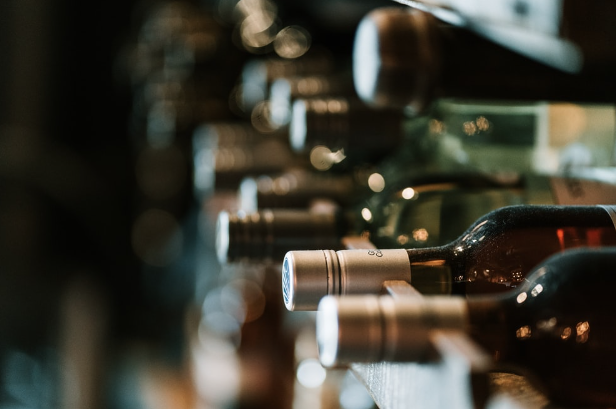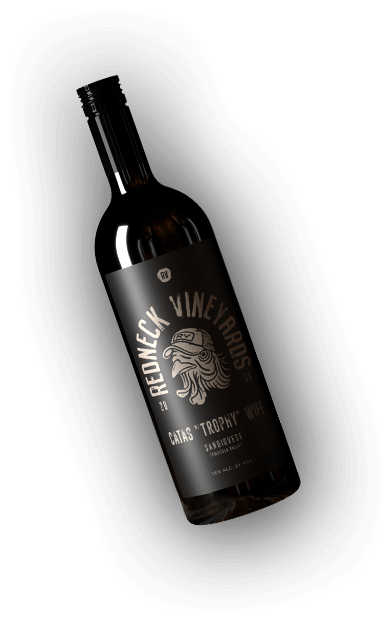Storing Wine, Wine
How to Store Wine Without a Cellar
For the most astute wine lovers, having a wine cellar is a mark of wealth. For others, a symbol of class and wine devotion. However, a home with a wine cellar is more than just an iconic symbol from the past or a modern trend. It serves a fundamental purpose: It’s a place to store your wine.
What if your home doesn’t have a wine cellar? How can you safely and correctly store your wine?
Five rules for storing wine that keep it in prime condition
Some wine enthusiasts insist wine cellars are necessary for proper wine storage. In addition to adding overall value to your home, a wine cellar also:
- Gives a home a Great Gatsby vibe
- Adds character
- Allows wine connoisseurs to buy wine in bulk
- Lets you age your wine and increase its value
These are all great benefits of a cellar for you—but what value does a cellar actually impart to the wine?
If you don’t intend to age your wine long-term, a wine cellar isn’t a must. In fact, it doesn’t take much to store wine and keep its qualities intact properly—but there are rules. With the rules outlined below, you’ll be able to maintain the original flavor, aroma, and quality of your unopened, home-stored wines.
Rule #1: Darkness
Most of us enjoy a bright home flooded with warm sunlight. Wine, on the other hand, thrives in a dark environment. Unfortunately, light, especially direct sunlight and fluorescent light, damages the flavor and aroma of the wine. That’s why many wines are bottled in colored glass, which essentially acts as a sunblock. However, even if the bottle has UV filters incorporated into the glass, it won’t safeguard the flavor and aroma of your precious wine if it’s in direct light all the time.
So, the lesson to learn here is, keep your wine away from light—especially white wines, which are the most sensitive to light degradation. If you don’t have a dark place to store your wine, lightly wrap a cloth around it or put the bottle inside a box. The less light, your wine will be better preserved, especially if you’re saving it for a special occasion.
Rule #2: Temperature changes
One of the most important rules when it comes to storing wine is to maintain a steady temperature. When wine faces sudden, dramatic shifts in temperature, it “over breathes” and suffers the effects of premature aging. In addition, in extreme temperature fluctuation cases, like going from the fridge to a hot garage, wine can develop condensation, which can cause mold to grow on the cork.
If temperature changes are unavoidable, then aim for gradual adjustments to give the wine time to acclimate. The temperature should never shift more than 3°F a day, especially when it comes to red wines, as they’re more susceptible to temperature-related degradation than white wines. However, even when you store your wine at a consistent temperature, if it’s too hot or too cold, the quality of the wine is still at risk.
Find your new favorite wine when you try Redneck Vineyards Wines.
Rule #3: The Goldilocks zone
For those of you who remember the story of Goldilocks, you’ll recall how she wasn’t content until she found the porridge that was not too hot or cold but “just right.” Similarly, you must also find that “sweet spot” temperature for your wine. When you store wine at temperatures higher than 65°F for longer than six months, the wine can experience an accelerated aging process that shortens its lifespan. Alternatively, storing wine at temperatures below 45°F prohibits the wine from fully developing and robs it of flavor and aroma.
Therefore, when you plan to store wine for six months or longer, aim for the “Goldilocks zone”—a temperature between 53°F and 57°F. For short-term storage, you can store your wine at its suggested serving temperature.
Basic suggested serving temperatures:
- 40–50°F: Light, dry white wines (like Sweet Oaks 2017 Chardonnay) and sparkling wines
- 50–60°F: Full-bodied white wines and light, fruity red wines (like Sol De Luz – Love Language – 2017 Grenache)
- 60–65°F: Full-bodied red wines (like Sweet Oaks 2016 Zinfandel) and ports
Warning: Beware of storing red or white wine in temperatures above 76°F. Even a few hours above this temperature results in a noticeable loss of fruit expression and can even cause the wine to taste “cooked.” Cooked wine tends to raisinate and develop characteristics of fruits that are not a part of the original flavor of the wine.
Rule #4: Avoid risky storage spaces
To keep alcohol out of children’s hands, many people believe storing a bottle of wine on their refrigerator is a good practice. They’re wrong. While it achieves the first objective, it sadly misses the mark for adequate wine storage. Storing wine on top of your fridge exposes it to light and temperature fluctuations and constant movement. That’s because refrigerators are opened and closed all day, and they usually vibrate, too. For older red wines, this continuous movement can disturb the sediments, also known as tartrate crystals, and prevent them from settling. This can potentially make your wine collection unpleasantly gritty.
Thankfully, unless you’re planning on storing your wine long-term (over a year), you probably don’t need to worry about this too much. But if you splurge on an expensive bottle of old wine, don’t risk it. Avoid storing these wines on or near vibrating appliances.
Rule #5: Manage moisture
If you live in a dry climate, you might want to use a humidifier. Or, if you live in an area with high humidity, you’ll want to invest in a dehumidifier. Why? When moisture is lacking, and humidity levels drop below 50 percent, corks begin to dry out and may result in loss of liquid and possible degradation of the wine. Alternatively, when the atmosphere is too humid—over 80 percent—your wine is at risk of sprouting mold or mildew. While these outcomes are undoubtedly problematic, if you plan to drink your wine within a year or so, you can consider your wine safe from these fates.
Storing wine is possible without a cellar
Storing wine, whether for a few weeks or up to a year, is possible without a wine cellar, especially if your aim isn’t to age wine. It takes a little effort and management, but you’ll save a ton of money avoiding a wine cellar bill.
Several options for wine coolers and wine fridges can make storing white and red wine a lot easier. Wine coolers create a stable temperature zone for your wine, which can be one of the most challenging things to regulate. Significantly cheaper than wine cellars, a dependable wine cooler or refrigerator ranges from a few hundred dollars to thousands of dollars.
Try Sweet Oaks Wines and find your new favorite.



